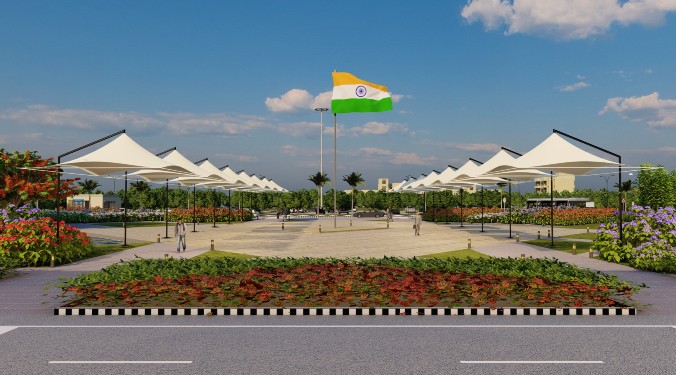"We remain committed to that niche of the market and are willing to be patient to see gains that may come tomorrow or perhaps the day after," says Sharmila H. Amin, Managing Director – South Asia India, Bertling Logistics India
Bertling, one of the world’s leading project logistics companies, has become a ` 100 crore-plus company in India within a span of 7 years. In an exclusive interview with ACE Update, Sharmila H. Amin talks about the company’s journey, its services and the challenges logistics industry in India faces. She has also touches upon why more and more women should join in the business of logistics.
From a humble beginning in 1865, Bertling has grown into a global company with 100 subsidiaries in 45 countries. How do you look at the journey of Bertling in India?Bertling began as a shipping company in Lubeck, Germany. We came to the Indian market in the 90’s when the logistics division was called Hansefracht Spedition.
We re-entered as Bertling Logistics India in 2007. Within a short span of 7 years we have grown into a Rs. 100 crore-plus company. So overall the growth has been very pleasing. However I think the best of Bertling India is yet to come. Tell us about the services you provide in India. Bertling Global Logistics Company provides end-to-end logistics services in this regional market. Our core competency involves us taking on large heavy lift and ODC cargo movement using a consortium approach with leading local companies who provide the equipment. We are also one of the leading freight forwarding company with our own CHA licence at all the major ports and airports in the region. We also specialise in major industrial, infrastructure, and oil and gas both upstream and downstream project related logistics. How significant is the Indian business as far as your global turnover is concerned?As one of the youngest and the fastest growing regions in the Bertling Logistics family, the India business already contributes about 5 per cent of our global turnover of a billion dollars. In a region that promises to be an area of growth over the next few decades, our presence here has added significance as one of the early entrants in the market.
Apart from that global clients of our company are in a rapid expansion mode in the region and expect services to be provided locally for their projects in India and the surrounding region.
All this makes our presence in the market significant and critical in nature as we expand our global footprint. Despite having tremendous potential, logistics industry in India is yet to achieve its mark. What are the bottlenecks the industry is facing?The logistics industry, and especially the project logistics industry, will grow hand in hand with the growth in manufacturing. That said the bottlenecks that this industry faces are numerous. The biggest bottleneck is the lack of road and rail infrastructure to support the rapid and voluminous movement of cargo. We are especially hampered when there is a movement of project cargo. We still have not managed to develop our coastal and inland waterway shipping to the potential that we have. Private equity (PE) or venture capital investment in logistics industry has dropped by around 80 per cent during the past one year. Why is it so?The industry has been barely keeping its head above the water in the last 2-3 years. As manufacturing has slowed down, so have imports and exports. The days of high return on investment are beyond the horizon. In addition the fact that traditionally we are not known to be a very professional and developed industry. It is no surprise that investments have dried up. What are the initiatives the govt must take to bring the logistics industry back on track?It has been my contention for quite a while now, that first and foremost we need an integrated and holistic policy for supply chain and logistics. This will include among many other things, a single-window clearance for road movements, development of dedicated freight and cargo corridors and a simplification of rules and regulations, especially for logistics providers so that percentage of idle time is reduced. What are the long- and short-term strategies you have as far as Indian business is concerned?It seems you want me to reveal all my aces for my competitors to act upon. Suffice it to say that we have reaffirmed our focus on the projects. We remain committed to that niche of the market and are willing to be patient to see gains that may come tomorrow or perhaps the day after. How do you feel being the only woman in the Indian projects logistics business?Well, it quite a mixed feeling! On one hand, it feels good to be at top in a man’s world, but sometimes one does feel lonely. However, I have now seen quite a few daring women professionals in shipping, which is also considered a male dominated industry. We have recently launched the Indian chapter of WISTA (Women in Shipping and Trading Association) – an affiliation with WISTA International, a non profit group of female professionals. Our tribe is growing and I wish there will be many more in the path I have followed. Why should more and more women join in the business of logistics?Why shouldn’t they? It is challenging and growing field, and there is nothing that should stop women from making it to the top of this industry. Besides, in the cosmic sense, it is always welcome that the masculine of the industry be balanced by the feminine and this industry is too full of men. We need a good solid balance by the addition of more women to this industry.
Cookie Consent
We use cookies to personalize your experience. By continuing to visit this website you agree to our Terms & Conditions, Privacy Policy and Cookie Policy.









